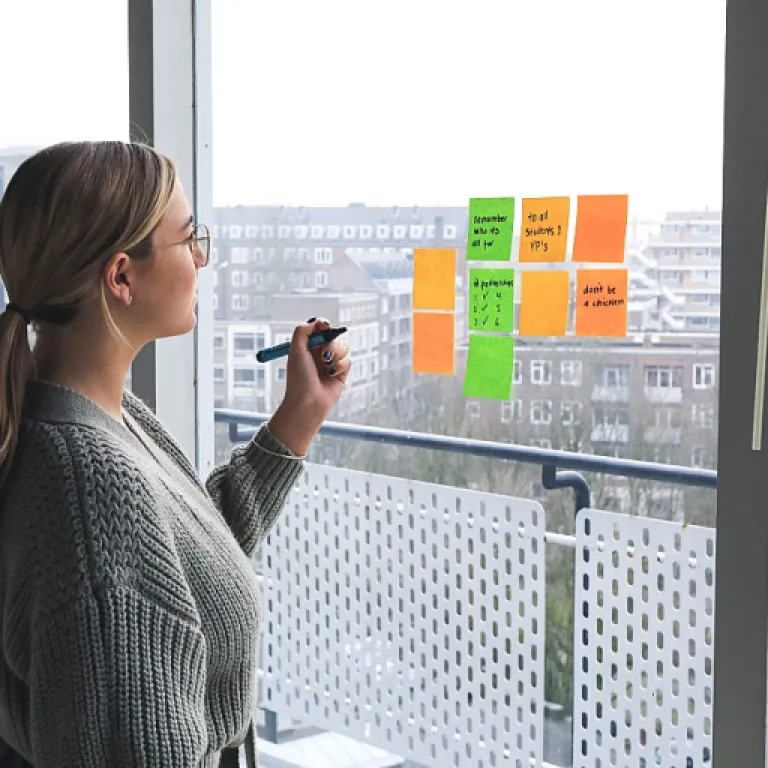
Understanding the role of team meeting p p p in onboarding
Why team meeting ppp matters in onboarding
When new team members join, the onboarding process sets the tone for their experience and productivity. One of the most effective tools for integrating new hires is the team meeting ppp framework—standing for Progress, Plans, and Problems. These meetings are not just about status updates; they help the entire team align on tasks, project goals, and OKRs. By regularly sharing progress, discussing plans for the week, and addressing problems, everyone stays informed and engaged.
How ppp meetings support project management and reporting
PPP meetings create a structured environment for status reporting and check-ins. For example, each week, team members can share what they achieved, what they plan to do next, and any blockers they face. This approach streamlines project management and ensures that managers and the team have a clear view of progress and challenges. It also encourages transparency, making it easier to spot issues early and move progress forward efficiently.
Benefits for new hires and the entire team
- Clarity: New hires quickly understand their role, tasks, and how their work fits into the bigger picture.
- Engagement: Regular status reports and open discussions foster a sense of belonging and encourage participation.
- Problem-solving: Addressing problems in real time helps avoid bottlenecks and supports faster onboarding.
- Consistency: Weekly meetings create a routine, making it easier for everyone to stay on track with project and customer service goals.
For organizations looking to further enhance their onboarding process, integrating effective quarterly business reviews can provide additional structure and value. Learn more about enhancing onboarding with effective quarterly business reviews and how they complement regular team meeting ppp sessions.
Preparing for a successful first team meeting
Setting the Stage for a Productive First PPP Meeting
A successful onboarding process relies on clear communication and structured team meetings. The first PPP (Progress, Plans, Problems) meeting is a key opportunity to set expectations, introduce status reporting habits, and help new team members feel included from the start.- Clarify the PPP framework: Before the meeting, share a brief overview of the PPP approach. Explain how team members will report on their progress, outline their plans for the week, and raise any problems they encounter. This transparency helps everyone understand the purpose of the meeting and how it fits into project management and status updates.
- Prepare a clear meeting agenda: A structured agenda ensures that the meeting stays focused. Include time for each team member to share their PPP report, discuss status updates, and address any blockers. For example, allocate a few minutes per person to cover what they achieved last week, what they plan to work on, and any issues that need support.
- Set expectations for participation: Encourage everyone, especially new hires, to contribute. Let them know that sharing even small wins or early-stage problems is valuable. This builds a culture of open communication and continuous improvement.
- Provide examples: Share sample PPP reports or status updates so new team members know what’s expected. For instance, a report might include: “Last week, I completed the customer service training module (progress). This week, I will start working on the onboarding checklist (plans). I’m having trouble accessing the project management tool (problems).”
- Assign roles: Designate a meeting facilitator or manager to guide the discussion and keep the team on track. This person can also help new members feel comfortable sharing their updates.
Encouraging participation and engagement
Creating a Welcoming Environment for Participation
When new team members join, the first few team meetings can feel intimidating. It's important to create a safe space where everyone feels comfortable sharing their progress, plans, and problems. The PPP (Progress, Plans, Problems) framework is a practical approach for structuring these meetings, making it easier for each person to contribute without feeling overwhelmed.
Setting Clear Expectations with the Meeting Agenda
Before the meeting, share the agenda with the entire team. This helps everyone prepare their PPP report and status updates in advance. For example, you might ask team members to summarize their progress on key tasks, outline their plans for the week, and highlight any problems or blockers. This structure not only keeps the meeting focused but also encourages participation from everyone, including those who are new to the project or organization.
- Encourage everyone to speak, even if their update is brief
- Rotate the order of speakers to avoid hierarchy
- Use prompts like "What did you achieve this week?" or "What will you work on next?"
- Allow time for questions and clarifications after each update
Fostering Engagement Through Status Reporting
Regular status reporting helps team members stay aligned and accountable. During onboarding, managers can model how to give concise status updates and share progress on OKRs or project milestones. This not only helps new hires learn the ropes of status reporting but also shows that their contributions matter to the team’s success.
For example, a weekly check-in using the PPP framework can highlight where progress has been made, what tasks are planned next, and which problems need attention. This approach supports transparency and helps the manager team quickly identify areas where support is needed.
Encouraging Open Discussion of Problems
One of the biggest onboarding challenges is getting new team members to speak up about problems. Make it clear that reporting problems is not a sign of weakness, but a valuable part of project management and customer service. When someone shares a blocker, the entire team can brainstorm solutions, moving progress forward together.
To further support engagement, consider referencing performance improvement plan training as a resource for handling challenges and fostering continuous improvement during onboarding.
Addressing common onboarding challenges in meetings
Making Space for Honest Status Updates
During onboarding, new team members often face challenges that can slow down their progress. Team meeting ppp (progress, plans, problems) sessions are a key moment to surface these issues early. By dedicating time in the meeting agenda for status updates and open discussion, managers create a safe environment for reporting problems and asking questions. This approach helps the entire team understand where tasks or projects might be stuck, and what support is needed to move progress forward.
Turning Problems Into Learning Opportunities
It’s common for onboarding employees to encounter obstacles with new tools, unclear project expectations, or unfamiliar workflows. When these problems are shared in weekly ppp meetings, the team can quickly offer solutions or guidance. For example, if a new hire reports difficulty with a customer service process, a more experienced team member can demonstrate best practices. This collaborative problem-solving not only resolves immediate issues but also accelerates learning and builds confidence.
Tracking Progress and Adjusting Plans
Consistent status reporting through the ppp framework allows managers and team members to monitor progress week by week. If tasks are not moving as planned, the team can adjust priorities or provide additional resources. This ongoing check-in ensures that onboarding goals and OKRs remain achievable, and that no one feels left behind. Status reports also help identify patterns—if several new hires face similar challenges, it may signal a need to improve onboarding materials or project management processes.
Encouraging Transparency and Accountability
When everyone shares their progress, plans, and problems, it sets a tone of transparency and accountability. Team members see that it’s normal to face setbacks and that support is available. This culture of openness helps reduce anxiety for new hires and encourages them to speak up about difficulties before they become bigger problems. Over time, regular ppp meetings help the entire team work more effectively together, ensuring that onboarding is not just a checklist, but a foundation for long-term success.
Using feedback from team meeting p p p to improve onboarding
Transforming Feedback into Actionable Improvements
Team meeting ppp sessions are a goldmine for feedback, especially when it comes to onboarding new team members. The ppp framework—Progress, Plans, Problems—naturally encourages open status reporting and highlights both achievements and roadblocks. By paying close attention to the feedback shared during these meetings, managers and the entire team can identify patterns, recurring issues, and areas where the onboarding process might need refinement.- Progress: Listen for examples of what new hires have accomplished each week. If certain tasks or projects are consistently delayed, it may signal unclear expectations or gaps in training.
- Plans: Review the plans shared by team members. If new hires struggle to set realistic goals, consider providing more guidance or adjusting the meeting agenda to include OKR (Objectives and Key Results) discussions.
- Problems: Take note of problems raised during status updates. Are there common obstacles? For example, repeated issues with customer service tools or project management platforms may require additional onboarding resources or check ins.
Integrating Feedback into the Onboarding Process
After each weekly meeting, managers should compile a simple ppp report summarizing key points. This report can be used to track progress week by week, monitor status updates, and document any problems that need follow-up. Over time, these reports become valuable for refining onboarding materials and processes.| PPP Element | Feedback Example | Action to Achieve Improvement |
|---|---|---|
| Progress | "Completed first customer service task successfully" | Highlight in onboarding materials as a milestone |
| Plans | "Will move on to project reporting next week" | Assign a mentor for project management support |
| Problems | "Unclear about weekly status report format" | Update onboarding guide with status reporting examples |
Creating a Continuous Improvement Loop
Regular team meeting ppp check ins not only help track individual progress but also create a feedback loop for the entire team. By acting on feedback, managers demonstrate that input is valued, which boosts engagement and helps new hires feel supported. Over time, this approach leads to more effective onboarding, smoother project handovers, and a stronger team culture.Building long-term connections through regular team meeting p p p
Creating Ongoing Value with Consistent Team Meeting PPPs
Regular team meeting PPPs (Progress, Plans, Problems) are not just for the first week or two of onboarding. They become a core part of how a team operates, helping new hires and existing team members stay connected and aligned. Over time, these meetings build trust, transparency, and a sense of belonging within the entire team.- Continuous status updates: Weekly PPP meetings provide a structured way for everyone to share their progress, plans, and problems. This regular status reporting keeps the manager team and all team members informed about project management, OKRs, and ongoing tasks.
- Tracking progress and achievements: By consistently reviewing progress plans and status reports, teams can see how much has been achieved since onboarding began. This helps identify patterns, celebrate wins, and spot areas where support is needed.
- Addressing problems early: Openly discussing problems in each meeting agenda allows the team to address issues before they escalate. This proactive approach supports both new hires and experienced staff in overcoming obstacles together.
- Strengthening team culture: Regular check-ins foster a culture of collaboration and accountability. Team members feel more comfortable sharing updates, asking for help, and contributing to the group’s success.
- Improving customer service and project outcomes: When everyone is clear on their tasks and responsibilities, the team can deliver better results for customers and stakeholders. Weekly PPP reports help ensure that nothing falls through the cracks.












